
It can be frustrating to receive substantial traffic to your website with little to no sales to show for it.
And the truth is, your marketing efforts — from SEO to referral marketing — will be in vain if you end up in a financial hole due to low conversion rates.
Converting visitors into loyal, repeat customers can be a tall order. This is especially true if you don’t understand the types of customers you attract and how best to handle them.
Customers are grouped into different categories according to a variety of metrics. And to convert them, you must understand them.
Some businesses classify customers based on how they complain. Others are grouped according to their shopping needs. It can get as granular as grouping based on the connection between shopping intention and brand attitude.
Let’s dive into the five basic types of customers, what they mean for your business, and strategies to handle each type of customer effectively.
1. Need-based Customers
The first and most common type of customer is the need-based customer. They know what they are looking for in a store and will often leave with nothing more than what they came for. It can be hard to upsell this type of customer, but it’s still doable.
A classic example of a need-based customer is a shopper entering a grocery store with a shopping list. This buyer wants to get in and out as fast as possible, only buying what they need.
But need-based customers are even more common for eCommerce businesses since they typically find online stores through search queries for specific products.
So, as an eCommerce brand, you’ll need to work harder to upsell them — especially since they can see their running total every time they check their cart.
How to Convert and Upsell Need-based Customers
While it sounds tough to upsell a need-based customer, it’s still possible. Here are some steps to make this process easier.
1. Ensure their buying experience is hassle-free.
Since the need-based buyers have already decided what they want, your job is to fulfill their needs with as few obstacles as possible.
This means ensuring your eCommerce website design is clean with no pop-up ads. You should also provide quick and easy checkout. Guide them towards buying what they need with an easy-to-navigate online store in case they’re unsure where to find it.
If website design isn’t your forté, but you still want to maximize every site visit, check out eCommerce platforms like Shift4Shop.
Shift4Shop guides you through creating the perfect store website with dozens of professionally designed templates, an intuitive website builder, easy-to-use design tools, and readily available web experts.
2. Know where your need-based customers come from.
Traceback their steps to determine which sources bring you the most need-based customers.
For eCommerce stores, your most significant traffic sources typically include social media ads, organic SEO traffic, traffic from PPC ads, influencer marketing, etc. Knowing how these customers get to your store can help you understand what pain points they struggle with most, which is the key to converting them faster.
For example, if most of your need-based customers come from search traffic, you can use tools like Ahrefs to determine which keywords you’re ranking for. By doing some quick research, you can determine the search intent behind each query — making it significantly easier to target your visitors’ needs.
This goes for every type of business with an online presence, whether you’re product-based or service-based.
For example, a service-based business like the Patel Law Firm might receive substantial traffic from their blog post that ranks #1 for the keyword “car accident rate manual.”
After a quick Google search, they’d find that people using the search term are asking whether an automatic or manual car is safer. The goal is to compare the two, not find out if manual cars are safe in general.
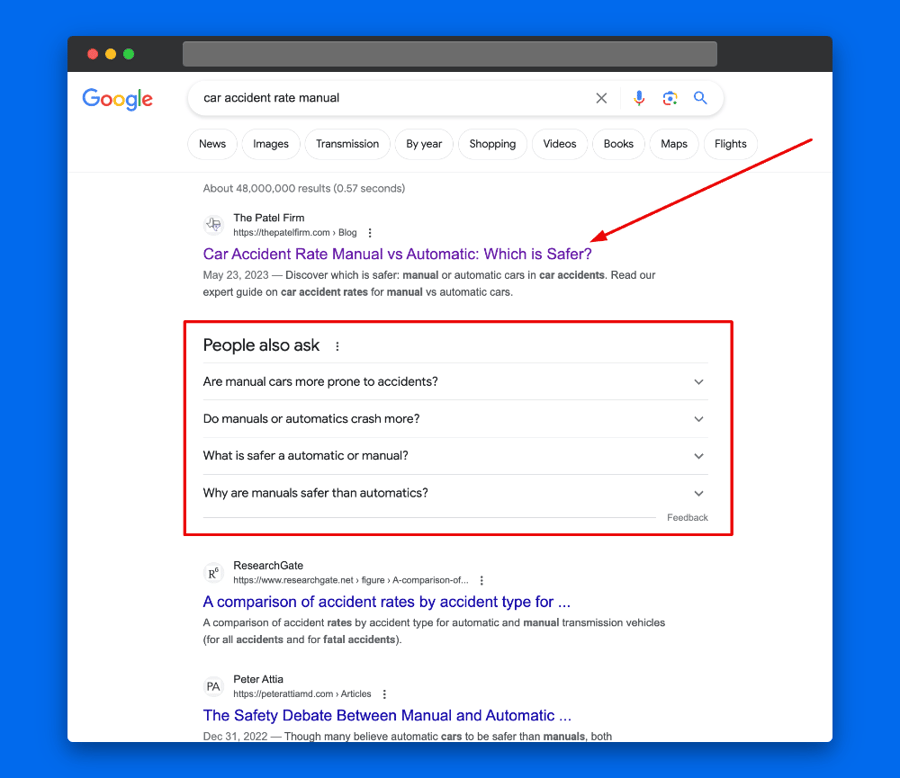
This guides them on which questions they need to answer in their post, ensuring their visitors get exactly what they need out of it. This trust increases the likeliness that they’ll choose the Patel Law Firm for their personal injury case over their competitors who didn’t provide the same help.
3. Personalize their shopping experience to upsell them.
It’s easy to walk into a grocery store with a list but come out spending $50-$100 more than you budgeted for. However, online shopping makes it much easier for customers to stay on course and only buy one item.
This means your upsell process needs to be highly personalized and highly tempting.
There are a few ways to do this:
- Use your shoppers’ buying and viewing history to recommend products you think they’ll enjoy most.
- Offer discounts, rewards, or other incentives for purchasing bundles.
- Offer free shipping or a discount on purchases over a certain dollar amount.
- Include an “Often bought together” carousel that encourages shoppers to add to their order.
Amazon implements the last strategy to a tee with its “Frequently bought together” selections on each product page. They also have a “Products related to this item” section.
So users searching for a massage gun might also decide to add a foam roller to their cart to enhance their post-workout recovery routine, thanks to Amazon’s suggestion:
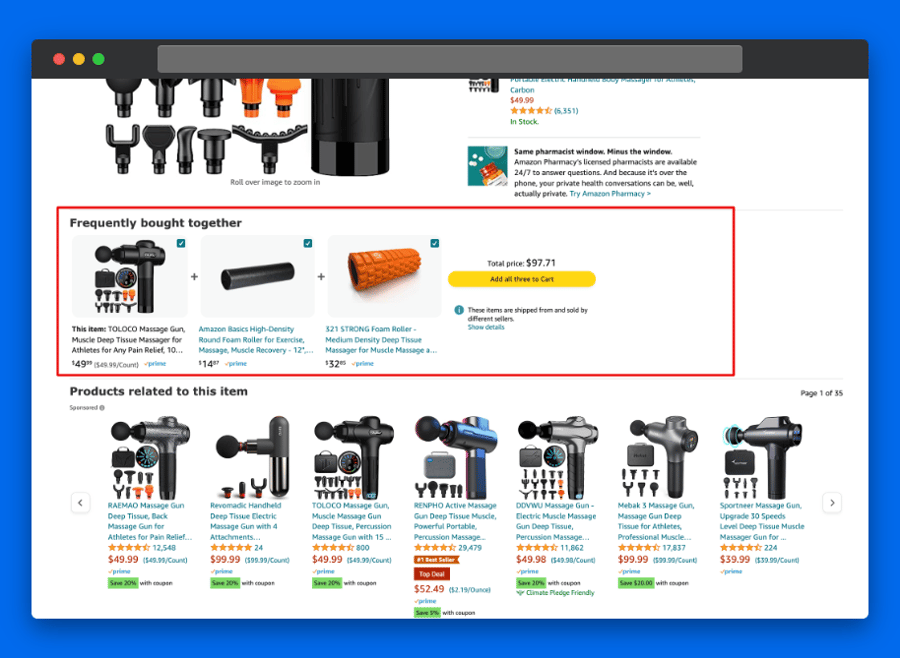
2. The Lookers
As the name suggests, lookers are the type of customers who are just browsing and have yet to make any purchases. However, they have expressed interest in the products or services you offer.
Some browse your store just to have fun and keep up with the latest trends, while others do non-aggressive preliminary research about what they’ll need later.
Imagine a customer attending a fashion event in a few months. This type of customer still has time to leisurely browse different clothing brands — including your store — to see what styles, designs, and trends are on the market. They might even add a few items to their shopping carts even though they haven’t decided what to buy.
It’s essential to know that lookers actively compare your business to your competitors. So, you need to have the best measures in place to convert them.
How to Convert the Lookers
You can implement several effective strategies to help convert lookers into buying customers. The following are some effective steps you can take to earn their sales.
1. Hook their interest with lead magnets and deals.
Since lookers aren’t usually ready to whip out their wallets yet, convincing them to buy will take extra time. In other words, they must be converted to a lead before a customer.
An easy way to push them through the sales funnel is by drawing them in with lead magnets, freebies, and special deals.
For example, an eCommerce store that sells travel items might offer a free PDF guide of the top 50 travel essentials or a free downloadable packing checklist.
Special offers are by far the most popular eCommerce lead magnet. If you promote that customers who register an account with their email receive 10% off their first order, they’ll be more likely to provide you with their details.
2. Improve user experience.
The lookers often visit a website more than once before they make any purchases. So, you want to ensure your website has a good user experience to encourage them to come more often.
The website should be user-friendly and clutter-free, providing an intuitive and seamless experience for all that land on it.
3. Launch remarkable campaigns.
Marketing campaigns have helped businesses move customers from being unsure of what they want to buy to being loyal brand subscribers.
Campaigns include targeted online ads, email marketing, and publishing quality SEO-optimized content that’s helpful to your customers.
3. New Customers
New customers are the type of customers every business loves having, apart from loyal returning ones. They show the company is thriving and attracting a wider audience, indicating that your marketing efforts and strategies are successful.
A new customer can be defined as a customer who’s purchasing from you for the first time. A previous customer can also be classified as a new customer if they buy a different product from what they usually purchase.
How to Convert New Customers
With new customers, you’ll have to ensure that your first impressions are on point to encourage them to shop again and refer others.
Here’s how you can handle your new customers for a long-term relationship.
1. Streamline your onboarding process.
If your business is the type that requires new customers to go through some form of onboarding (like setting up an account, getting familiar with the products, or simply registering for a service), ensure it’s a seamless and user-friendly process.
For example, many businesses are implementing one-click registration using a Google account. The lengthy process of typing in an email, choosing a password, and answering several other questions is being phased out.
Other sites — like TikTok — now let users skip lengthy login processes by allowing them to use QR codes.
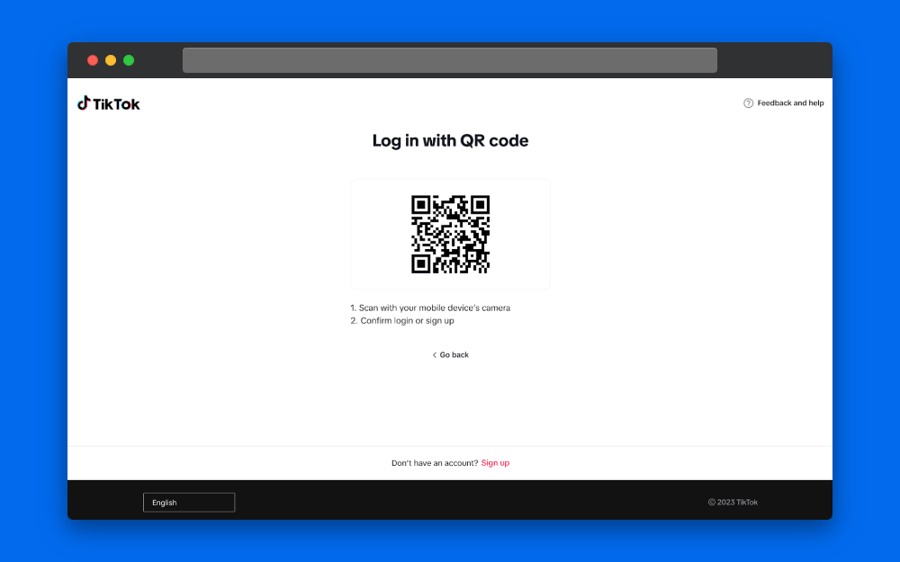
You can easily set up a QR code for your business using tools like this free QR code generator.
2. Seek feedback and act on it.
Always encourage your new customers to leave feedback about their experience. Constructive criticism will help you identify where to improve, while positive feedback helps boost your confidence in the market.
For example, the $48 billion stock price athletic wear company Luluemon does this with a simple feedback form users can click on when they visit the website homepage.
Once clicked on, the feedback form looks like this:
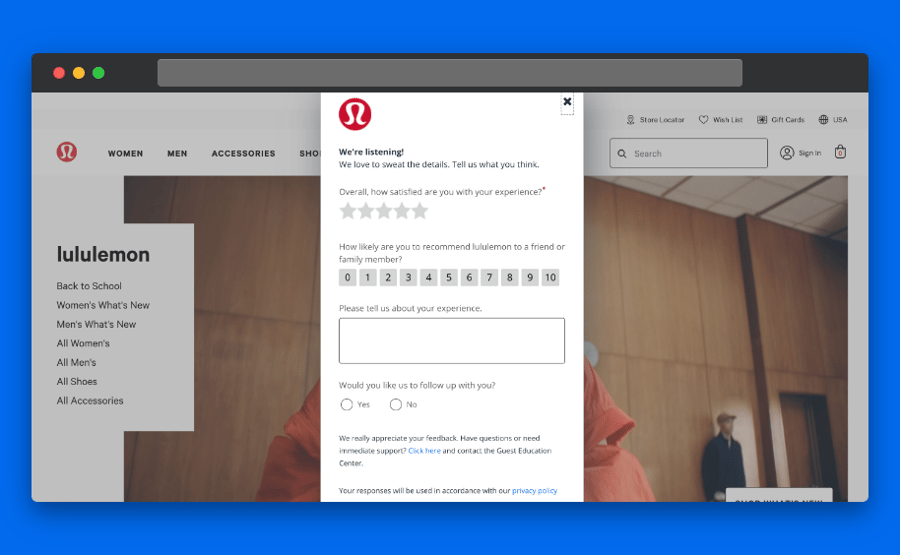
3. Get involved in their success.
Make sure you don’t leave new customers struggling to figure out how to use your products or take advantage of your services on their own. Hold their hands at every step of the journey. Answer all the questions they have and act on their concerns promptly.
4. Continue the relationship after they purchase.
People stay where they feel their presence is acknowledged and appreciated. Ensure your customer service representatives are passionate about helping your customers, going above and beyond to ensure they are satisfied.
Send follow-up messages to express gratitude after every purchase made in your store. You can even include promotions they may find interesting. The goal is to stay engaged with them and keep your brand image in their minds for as long as possible.
4. Loyal Customers
Loyal customers are the best customers every company should strive to have. These customers will prefer your brand over others and often return to shop with you. It takes time and effort for a brand to build and keep a loyal customer base.
The best example of a company with loyal, die-hard fans is Apple. They have a 90% customer retention rate, which is a testament to the unwavering loyalty their products and brand inspire.
Because of this, many high-end consumers prefer buying their phones and other gadgets from a reputable electronic store like Apple before any other company.
How to Keep Loyal Customers and Convert Even More
Gaining loyal customers should be the goal of every eCommerce business. However, you need to stay active to ensure that they remain loyal to your brand. Follow these steps to convert this customer group.
1. Feature loyal customers and their testimonials on case studies.
Recognition makes people feel valued and appreciated. Put your loyal customers in the spotlight and share their journey to success using your products or services. Of course, do this only after being granted exclusive permission from the customer.
Building a loyal customer base takes work. So once you start getting these success stories, learn what you did right so you can replicate those positive experiences and strategies. You’ll have to collect enough data to understand this fully. The data should include (but not be limited to) their needs, motivations, geographic areas, gender, etc.
2. Have a reward system in place.
Consider having a loyalty program where each customer earns points for their purchases, meaningful engagement with your brand, or for each customer they refer. Get creative with it. For example, the points can be redeemed for discounts and early access to your new products or services.
3. Consistently improve their experience.
One of the reasons customers convert into loyal clients is how good their shopping experience is with businesses. You would want to ensure that your customer care quality is maintained. Research has found that 61% of consumers cut ties with a brand after an incident of subpar customer service.
4. Encourage referrals.
It’s easier for loyal customers to suggest your products or services to their circles because they believe in them. Encourage them to put the word out with a referral program where they’ll get compensated for their contribution.
5. Impulse Buyers
Impulse buyers are customers who have no plans to buy anything but decide to purchase a product or service at the spur of the moment. They can be unpredictable but lucrative if you can convert them on your online store.
How to Convert the Impulse Buyers
Your shopping experience must be on point for impulse buyers to convert on your site. Since they’re shopping urgently, they may just as quickly decide to click away to a competitor. Keep them on your site and convert them with these strategies.
1. Create a sense of urgency.
Limited-time offers work exceptionally well with impulse buyers.
These types of exclusive deals and promotions are good at motivating them to keep on buying from you and converting them into regular customers. They’ll know you often have offers periodically, so they won’t want to miss out on any future promotions.
For example, the eCommerce store SHEIN is an impulse buyer’s dream. Just look at how easy it is to get drawn in with all the sales and special offers that encourage prompt purchases:
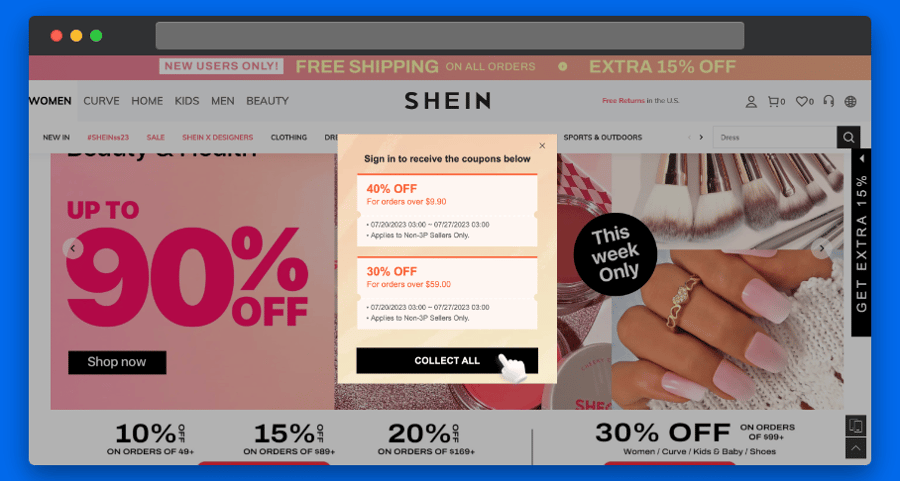
2. Give them easy access to customer support.
Impulse buyers tend to contact the support center more often than other customers. This is because they likely made hurried purchases and started using the product without learning about it. If this happens, patiently take them through your product to ensure they use it correctly and get the intended results.
A good way to keep them engaged and satisfied is to utilize macros. These automated responses are sent out when matching support desk questions come in from clients.
Another tool that can significantly help impulse buyers is a live chat feature. With live chat on your store website, customers won’t have to worry about finding a number to call, being put on hold, or dealing with poor customer service.
Wrapping Up
All customers will have needs and motivations that push them to buy certain services and products. As a business, your work is to identify and address their pain points as efficiently as possible.
However, there are a few things that all customers expect from their service providers. These factors cut across all industries and businesses and significantly affect whether your business will succeed.
They include the following:
- Offering quality products and services
- Offering the best customer experience
- Having a friendly and approachable support system
- Ability to respond quickly to questions, issues, and concerns raised
- Clear instructions on how to use products and services
With this guide, you’ll be well on your way to converting every type of customer that comes across your eCommerce store. Whether they’re a need-based buyer, looker, new customer, loyal customer, or impulse buyer, you can get them to convert.





Leave a reply or comment below